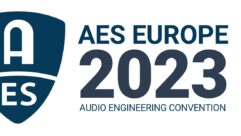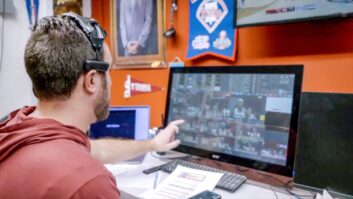

State of the Union
ARE WE NEARING THE LONG HOPED FOR GRAND CONVERGENCE of technology? We’ve achieved a great deal over the past decades. Audio and video signals have been digitized. We’ve created and modified transport mechanisms so we can route signals and the information they carry. We use LAN technology to carry signals and control devices. IP technology connects people around the globe. But are we there yet? Despite all these advances, technology still needs a lot of work ? it will always need work. After all, technology continues to evolve and adapt; newer technologies will surface; and we will have to learn how to use them for our purposes.
ARE WE NEARING THE LONG HOPED FOR GRAND CONVERGENCE of technology? We’ve achieved a great deal over the past decades. Audio and video signals have been digitized. We’ve created and modified transport mechanisms so we can route signals and the information they carry. We use LAN technology to carry signals and control devices. IP technology connects people around the globe. But are we there yet? Despite all these advances, technology still needs a lot of work — it will always need work. After all, technology continues to evolve and adapt; newer technologies will surface; and we will have to learn how to use them for our purposes.
However, there are other types of convergence that we must now focus our efforts on. One is a convergence of knowledge. While there are individuals and some companies that have started this dialog, we still tend to stand on opposite corners of the intersection and occasionally jeer, taunt, and throw catcalls at one another. Safe in the company of our peers, we poke fun and share stories of when we encountered “one of them” and what a hick he was when it came to understanding “our world.”To move towards true convergence, we must seek first to understand and then to be understood. Sound familiar?
A FIRST STEP?
The news of NSCA and InfoComm joining forces for a combined trade show has generally been favorably received within our industry. The AV industry has more to gain than lose from this synergy, and those benefits are readily observable. Attending one trade show for product review, industry training, and meetings will make life easier for almost everyone. We’ll be busier, but it will lead to new avenues of cooperation for both associations and their members.
While we may also see the benefit in the co-location of InfoComm/NSCA with NXTcomm —the convergence of AV, IT, telecommunications, and entertainment — not everyone represented at NXTcomm heralds this union. I was looking around the NXTcomm Web site the other day and followed the links to some commentary about the trade show announcement. Admittedly, the comments came from only three or four readers but in their minds, this is a non-event. They wondered what NXTcomm could gain, and what in the world they could learn from our industry. And there was the definite opinion that they had nothing to learn from us. They also felt there were other, more strategic trade shows that would be a better fit than InfoComm.
The U.S. telecommunications industry is expected to generate $1.2 trillion in revenue by 2010; the North American AV industry, only about $25 billion, according to a recent survey commissioned by InfoComm International. Their perception that we are chump change is accurate. Much of our growth at present and in the future is driven by the physical convergence of IT networks and AV equipment, which is in turn driven by our need to communicate.
Obviously, much work remains ahead of us.
We need to better understand what is happening within these other industries. What issues are they grappling with? How will those issues affect our ability to deliver communications platforms to our clients? How do we gain a place at the table so we participate with them in making these decisions?
UNDERSTANDING THE OTHER
We should continue our efforts in adding technical knowledge about other fields to our own staff capabilities. Whether this is accomplished through strategic alliances with other experts, through adding staff with that expertise, or sending current staff for training and certification, this is a high priority for our industry. There are relatively few individuals in the AV industry with C-EST, CTS, NICET, and RCDD certifications. If we can’t wrap all of this into a single super-human individual, we need to open the lines of communications between those individuals or departments in our companies.
We are beginning to see AV departments associated with or incorporated into IT departments in many market segments. Often, in IT departments there is an overly simplified understanding of AV systems — how they are designed, installed, and operate. When someone asks why he can’t just go down to the local warehouse store to obtain his AV equipment, we must be able to clearly communicate our experiences, concerns, and long-term benefits of avoiding that trap. We must be able to translate the language of AV into one they can understand.
Frankly, we often ask them questions that they think are absurd, which leads them to write us off and ignore our needs and issues. Failing to understand the impact each of our decisions has on each other will lead to significant delays in systems installation, commissioning, and use. When we can learn effectively, we will work together as a team more effectively, and we’ll find much less conflict and misunderstanding. Once we understand why they have structured their network in a particular manner and how we need to operate within that environment, we’ll be able to deliver effective communications systems to our clients.
Finally, let’s look at this from the outside — the perspective of the CEO who asked us to deliver an integrated communications and control solution. He has the impression that this should all be easy to do — plug and play. He is entranced by the magic and the potential it holds for his company. But in some cases, what we do appears more like a Keystone Kops comedy. As with any feat of magic, it takes understanding, careful communications, and hours of work to deliver the show.
The fact that the AV, IT, and telecommunications industries are standing at the same intersection should be a clue to how much we have in common and how much we all stand to gain from learning to work and live with one another rather than deriding the other party. We share a common goal of ensuring our clients can communicate, whether we provide the backbone that connects us together or whether we provide the devices that connect to that infrastructure.
Take advantage of the opportunity at next year’s show to attend keynote addresses, walk the show floor, participate in classes, and ask questions. Think in someone else’s box. The synergy that will come from those interactions will help us understand their perspective and shed some light on how best to approach and solve the common problems we all face.
Thom Mullins is a senior consultant with BRC Acoustics & Technology Consulting in Seattle. He can be reached at [email protected].








